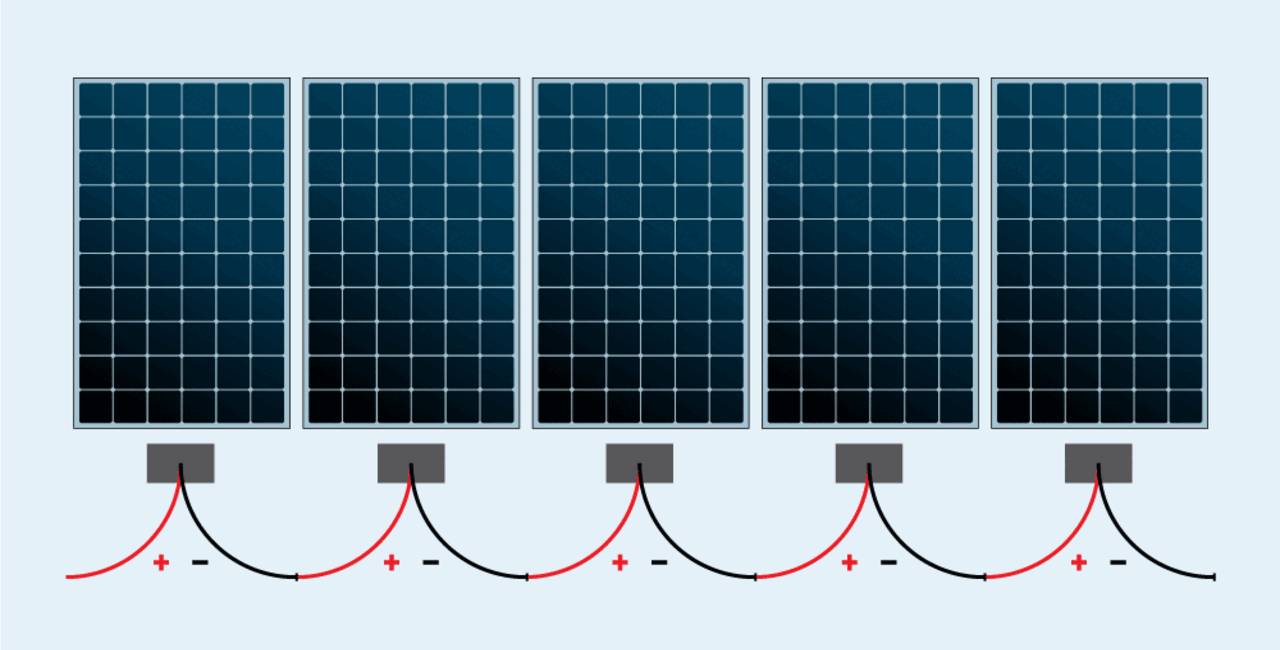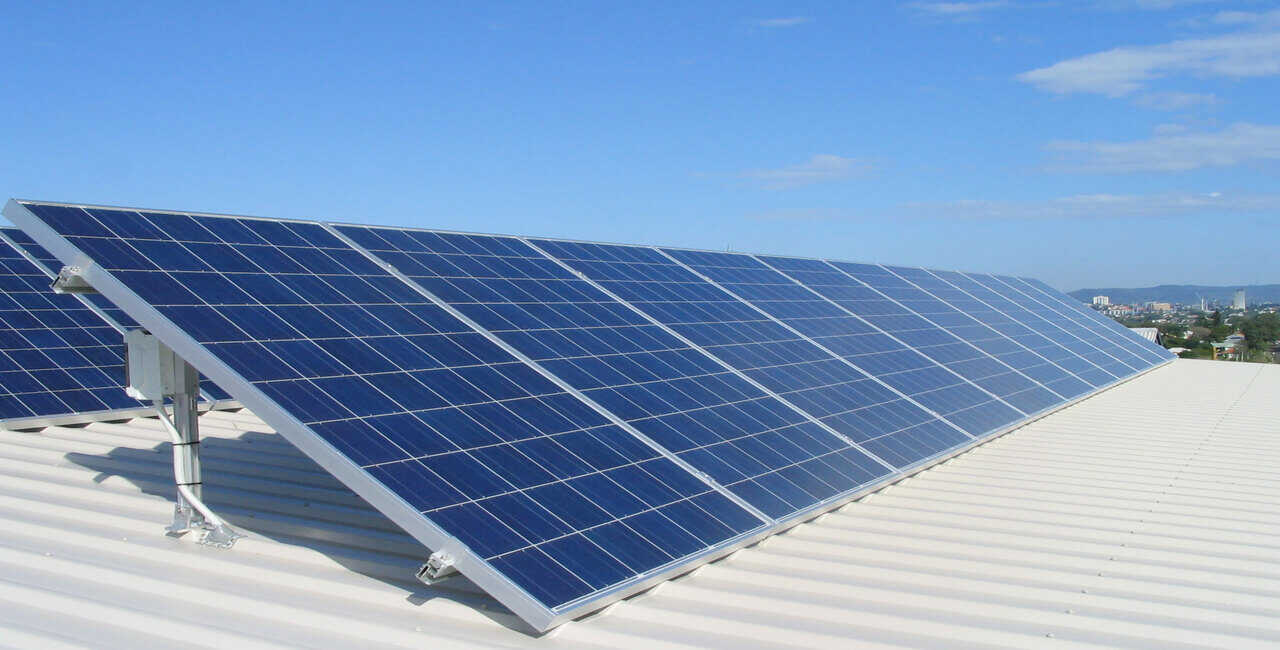How Many Solar Panels Can I Connect To My Inverter?

In the quest for harnessing sustainable and renewable energy sources, solar power stands out as a promising solution to meet our growing energy needs. As individuals and businesses increasingly adopt solar photovoltaic (PV) systems, a crucial consideration emerges: how many solar panels can be effectively connected to a specific inverter? This question lies at the heart of optimizing solar power generation, ensuring efficiency, and managing costs.
In this guide, we will delve into the factors influencing the number of solar panels connected to an inverter, exploring key considerations such as inverter capacity, system design, and the importance of striking the right balance to maximize the benefits of solar energy.
Whether you are a homeowner looking to install a residential solar system or a business owner considering a commercial solar array, understanding the dynamics of solar panel and inverter compatibility is essential for making informed decisions toward a sustainable and energy-efficient future.
Understanding Inverter Capacity
Inverter capacity is a critical parameter in the solar power system, determining the maximum amount of electrical power the inverter can convert and deliver to the electrical grid or the connected load. Expressed in kilowatts (kW) or megawatts (MW), the inverter capacity plays a pivotal role in ensuring the seamless integration of solar panels into the overall energy infrastructure.
The capacity of an inverter is directly linked to its ability to handle the electricity generated by the connected solar panels. It serves as a bridge between the direct current (DC) output produced by the solar panels and the alternating current (AC) required for most household and commercial electrical appliances.
Types of Inverters and Their Capacity Limits
There are various types of inverters available in the market, each designed for specific applications and with different capacity limits. The common types include:
String Inverters:
- Typically used in residential solar installations.
- Have capacity limits ranging from 1 kW to 10 kW.
- Connect multiple solar panels in series (strings) and convert the total DC power into AC power.
Central Inverters:
- Commonly employed in large-scale commercial or utility-scale solar projects.
- Offer higher capacity, ranging from tens of kilowatts to several megawatts.
- Efficiently handle large arrays of solar panels, optimizing power production.
Microinverters:
- Installed on individual solar panels.
- Typically have lower capacity limits, ranging from 200 W to 600 W.
- Enable independent optimization of each solar panel's output.
- Integrate solar panels with battery storage and grid connection.
- Capacities vary, covering both residential and commercial applications.
- Facilitate energy storage and grid independence.
Importance of Selecting an Inverter with the Right Capacity for Solar Panels
Selecting the right inverter capacity for solar panels is crucial for optimizing system performance. Matching or slightly exceeding the total capacity of connected solar panels ensures maximum power output. Avoiding underutilization or overloading is essential, preventing inefficiencies or wear and tear.
Opting for a scalable inverter allows for future expansion without system overhauls. Economically, right-sizing the inverter minimizes costs, avoiding unnecessary expenses or performance compromises. In essence, precise selection of inverter capacity is paramount for efficient, reliable, and economically viable solar energy utilization.
Calculating Solar Panel Wattage

Calculating solar panel wattage is a fundamental step in designing an efficient solar power system. Individual solar panel wattage is determined by multiplying the panel's voltage by its current. This product represents the panel's power output, measured in watts (W). Understanding the wattage of each solar panel is essential for optimizing energy production, as it allows for precise system sizing and configuration.
Considering the Efficiency Factor in Solar Panel Calculations
In solar panel calculations, it's crucial to account for efficiency. Solar panels have an efficiency rating that indicates how effectively they convert sunlight into electricity. The efficiency factor adjusts the calculated wattage based on the panel's ability to capture and convert sunlight. For example, a panel with an efficiency rating of 18% will have an adjusted wattage lower than its nominal wattage. Considering efficiency ensures a more accurate estimate of the actual power output of the solar panels in real-world conditions.
Using the Total Wattage to Assess Inverter Compatibility
Once individual solar panel wattages are determined, the total wattage of the solar array can be calculated by summing the wattages of all connected panels. This total wattage is a key parameter for assessing inverter compatibility. The inverter selected must have a capacity that accommodates the total wattage of the solar panels. Choosing an inverter with the appropriate capacity ensures optimal energy conversion and prevents underutilization or overloading, contributing to the overall efficiency and longevity of the solar power system.
Factors Influencing Solar Panel-Inverter Ratio
As we delve into the intricacies of solar power system design, understanding the optimal ratio between solar panels and inverters becomes paramount. The effectiveness of a solar array relies not only on the capacity of individual components but also on their harmonious interaction with external factors.
In this section, we explore the geographic considerations shaping the panel-inverter ratio, examine the impact of seasonal variations on solar energy production, and delve into the temperature factors influencing the optimal configuration of solar arrays. By navigating these influential elements, we aim to unravel the complexities of achieving the ideal balance for solar panel and inverter compatibility in diverse environmental contexts.
- Geographic Considerations for Solar Panels and Inverter Compatibility: The geographic location of a solar power system plays a pivotal role in determining the optimal ratio between solar panels and inverters. Solar insolation, or the amount of sunlight received, varies based on the region's latitude, altitude, and climate. In sunnier regions, where solar irradiance is higher, a higher ratio of solar panels to inverters may be effective in harnessing abundant sunlight. Conversely, in regions with lower solar insolation, a lower ratio may be sufficient. Adapting the panel-inverter ratio to local geographic conditions is essential for maximizing energy production and system efficiency.
- Seasonal Variations in Solar Energy Production Affecting Panel-Inverter Ratios: Seasonal variations significantly impact solar energy production, influencing the optimal ratio of solar panels to inverters. In certain seasons, sunlight exposure is more intense, leading to increased power generation. Adjusting the panel-inverter ratio to accommodate these variations ensures that the system is well-calibrated to capitalize on peak production periods. Understanding the seasonal nuances helps in striking the right balance and optimizing the system's overall performance throughout the year.
- Temperature Considerations and Their Impact on the Optimal Ratio for Solar Arrays: Solar panel performance is sensitive to temperature, and extreme heat can affect efficiency. In regions with high temperatures, the optimal panel-inverter ratio may need adjustment to account for potential decreases in solar panel efficiency. Conversely, in cooler climates, where panels may perform more efficiently, a different ratio may be appropriate. Balancing the impact of temperature on the overall system efficiency is crucial for maintaining consistent and reliable energy production over time.
The optimal ratio between solar panels and inverters is influenced by geographic considerations, seasonal variations in solar energy production, and temperature effects. Tailoring the panel-inverter ratio to the specific conditions of the installation site ensures that the solar power system operates at its highest efficiency, maximizing energy output and contributing to the long-term success of renewable energy initiatives.
Steps to Determine the Ideal Number of Solar Panels

Conducting an Energy Audit for Accurate Consumption Data
The initial step in determining the ideal number of solar panels involves conducting a thorough energy audit. By analyzing historical energy consumption patterns, you gain valuable insights into your electricity needs. Understanding how much energy your household or facility uses on a daily and seasonal basis provides a solid foundation for sizing your solar power system accurately. An energy audit ensures that the solar panel installation aligns with your specific energy demands, optimizing the system for efficiency.
Factoring in Desired Energy Output and Goals for Solar Installations
To tailor the solar panel configuration to your needs, consider your desired energy output and overarching goals for the solar installation. Whether aiming for complete energy independence, offsetting a specific percentage of utility bills, or contributing to sustainability initiatives, defining your objectives guides the determination of the ideal number of solar panels. This step involves striking a balance between meeting current energy demands and allowing for future expansion, ensuring that the system aligns with both short-term and long-term goals.
Utilizing Online Tools and Calculators for Assistance in Determining Solar Panel Numbers
Numerous online tools and solar calculators are available to assist in the precise determination of the ideal number of solar panels. These tools consider factors such as location, roof orientation, shading, and local sunlight conditions. By inputting relevant data, users can obtain accurate estimates of the number of panels needed to achieve specific energy goals. Leveraging technology simplifies the planning process, empowering individuals and businesses to make informed decisions about their solar power investments.
Determining the ideal number of solar panels involves conducting an energy audit, factoring in desired energy output and goals, and utilizing online tools for precise calculations. By following these steps, individuals and businesses can customize their solar installations to meet specific energy needs, optimize efficiency, and contribute to a sustainable energy future.
Overcoming Common Challenges
Addressing Shading Issues and Their Impact on Solar Panel-Inverter Performance:
- Implement a strategic system layout to minimize shading effects.
- Utilize bypass diodes in solar panels to mitigate shading-induced efficiency losses.
- Opt for careful placement of panels considering potential obstructions like nearby structures or trees.
Mitigating Mismatch Losses in Solar Arrays Through Careful Planning:
- Select solar panels with similar specifications, orientations, and ages.
- Employ Maximum Power Point Tracking (MPPT) inverters for optimizing individual panel outputs.
- Conduct meticulous planning while solar designing to minimize variations and enhance overall system efficiency.
Incorporating Expansion Plans for Future Solar Power System Needs and Adjustments:
- Design the system with scalability in mind to accommodate future additions.
- Consider technological advancements and changes in energy consumption when planning for system adjustments.
- Ensure the flexibility of the solar power system for seamless expansion without extensive modifications.
By addressing shading issues, mitigating mismatch losses, and incorporating expansion plans, solar power systems can overcome common challenges, ensuring long-term efficiency, adaptability, and sustainability.
Professional Consultation and Site Assessment

Importance of Seeking Professional Advice for Solar Installations
Embarking on a solar energy project is a significant investment, and obtaining professional consultation is crucial to ensure its success. Professional advice not only brings expertise to the table but also helps navigate the complexities associated with solar installations. Here are key reasons highlighting the importance of seeking professional advice:
- Customized Solutions: Every property is unique, and its solar potential varies based on factors such as location, shading, and roof orientation. Professionals can assess these variables and design a tailored solar energy system that maximizes efficiency and output.
- Regulatory Compliance: Solar installations are subject to various local regulations, permits, and building codes. Professionals are well-versed in these requirements and can guide you through the necessary processes, ensuring compliance and avoiding potential legal issues.
- Financial Optimization: Professionals can conduct a thorough analysis of your energy needs and provide insights into the optimal system size, helping you strike a balance between upfront costs and long-term savings. They can also assist in identifying available incentives, rebates, and financing options to make your solar investment more financially attractive.
- Equipment Selection: Choosing the right solar panels and inverters is crucial for the performance and longevity of your system. Professionals can recommend high-quality components based on your specific requirements, ensuring reliability and efficiency over the system's lifespan.
Conducting a Site Assessment for Optimal Solar Panel Placement and Inverter Performance
A comprehensive site assessment is a fundamental step in the solar installation process. This involves evaluating the property's characteristics to determine the most effective placement of solar panels and optimize inverter performance. Key aspects of a site assessment include:
- Solar Exposure: Professionals assess the amount of sunlight your property receives throughout the day and across different seasons. This information helps determine the optimal placement of solar panels to capture maximum sunlight and generate more electricity.
- Shading Analysis: Identifying potential sources of shading, such as trees, buildings, or other obstructions, is critical. Shading can significantly impact solar panel efficiency, so a thorough analysis ensures that the installation minimizes shading effects.
- Roof Assessment: The condition and orientation of your roof play a vital role in solar panel placement. Professionals examine the roof's structural integrity and recommend any necessary repairs or modifications. They also consider the roof's angle and orientation for optimal sunlight exposure.
Leveraging Expert Insights for Tailored Solutions in Solar Panel-Inverter Compatibility
The compatibility between solar panels and inverters is essential for the overall efficiency and performance of a solar energy system. Professionals offer valuable insights in this regard by:
- Matching Specifications: Different solar panels and inverters have specific technical specifications. Professionals analyze these specifications to ensure seamless integration, preventing compatibility issues that could affect the system's efficiency.
- System Optimization: Experts consider the voltage and power characteristics of both solar panels and inverters to optimize the overall system performance. This includes selecting inverters that can efficiently convert the generated DC power from the solar panels into usable AC power for your property.
- Future-Proofing: Professionals take into account the evolving nature of solar technology and provide recommendations for components that are compatible with potential future upgrades. This ensures that your solar energy system remains adaptable and can benefit from advancements in the industry.
Conclusion
Determining the optimal number of solar panels for connection to an inverter requires careful consideration of compatibility, efficiency, and site-specific factors. Seeking professional consultation and conducting a thorough site assessment are essential steps in this process. By prioritizing compatibility and efficiency over sheer quantity, property owners can ensure the long-term success and performance of their solar energy system.

